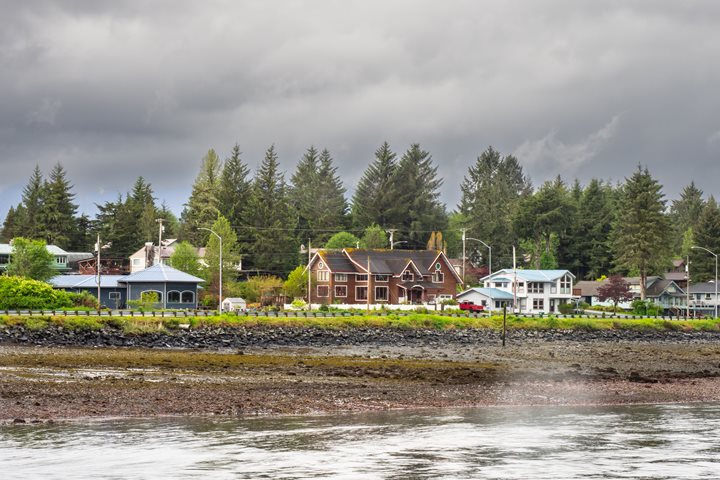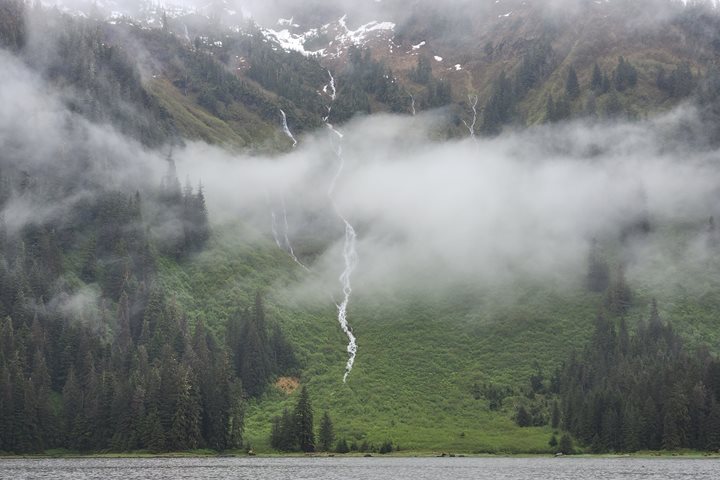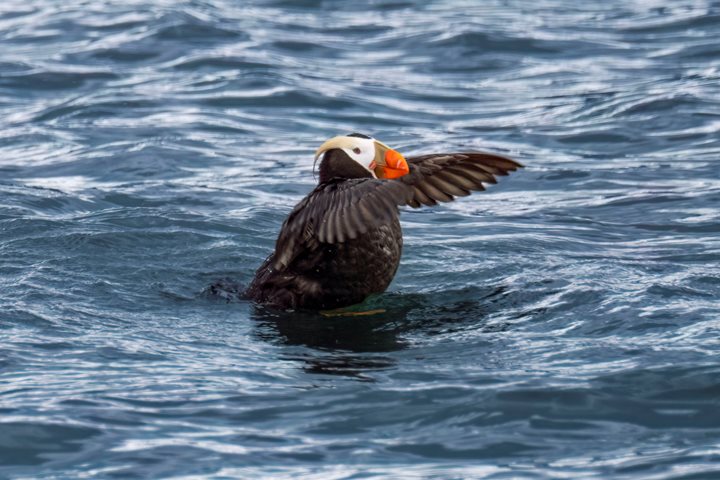Early this morning National Geographic Sea Lion was motoring slowly into the depths of a long inlet called Port Althorp. It is the last channel on the northwest side of Chichagof Island with Cross Sound and the Gulf of Alaska to the west, the open Pacific Ocean and our most westerly point on our journey exploring Southeast Alaska. After all morning announcements were complete and yet another hearty breakfast, our very reliable landing craft began ferrying everyone ashore. Our compliment of photographers and hikers were divided into many different groups all with the goal of exploring the inner tidal, forest edge and one of many intact habitats for brown bears in Southeast Alaska.
Earlier this morning a brown bear had been spotted on shore, and all of our hikes were in his footprints. The inner tidal area was not only filled with footprints but also morning dew on feathers, algae, and beach rye grass. Photographers could be seen bent over and crouched down over the small world of the macro, finding image after image of a world tiny and decorated with diamonds of morning dew!
Slowly, we made our way across the tidal flats towards a salmon stream filled with fish. On approach we could smell the fecundity - the life of fish spawning, dying, and providing a sustainable abundance in this fall season of harvest. The small river was full of pink salmon making their way up river to a chosen spawning area. Along the shore dead males and females waited for the next phase whether it be consumption by predator or absorption into the land as added nutrients. Photography was awesome from the backs of male salmon above the water level of the small river to flying eagles, morning dew on grass blades and the ever changing sunlight and clouds.
All too soon it was time for round two and many a group of hikers made their way back to our landing site and waited for life jackets, kayaks, and Zodiacs. The second round of the morning brought the gift of solitude in a quiet kayak or Zodiac ride around the bay. The waters of the bay were filled with lion’s mane jelly fish, some whose tentacles spanned over ten feet in length. Many eagles of all ages sat in Sitka spruce and western hemlock enjoying the view, or perhaps they were watching for a late morning meal!
The waters remained very calm, which only added to each explorer’s experience. We were blanketed in the peace and protection of this isolated inlet, part of a remote and unbelievably gorgeous piece of wilderness.
Soon the radio chatter rose in volume, and everyone slowly began their individual return to the waiting National Geographic Sea Lion and to lunch. As soon as lunch was finished our entire group once again donned life jackets and prepared for an extended Zodiac ride in the Inian Islands. This group of islands mark the most northern entrance of Cross Sound and the Gulf of Alaska and the entry of all tidal waters to Southeast Alaska. The rush of the incoming tide brought the enormous richness of upwelling nutrients to the surface where myriad creatures, both small and large, had come to feed. Humpback whales, Stellar sea lions, sea otters, bald eagles, ravens, and many, many more sentient creatures were present, feeding on the nutrient rich waters to fatten up in the summer months of abundant light and fast-moving waters. Late summer and early fall are the peak of harvest season throughout the northwest coast; not only for the animals of land, air, and sea but also for every human family that calls this place home. We were all lucky to watch not only the natural world around us, but we also recognized the many fishing boats we saw that were also part of this great end of year harvest, found from Southeast Alaska to the mouth of the Columbia River. The Inside Passage is a place of bounty and today, it was a gift given to each of us to witness this abundance.









